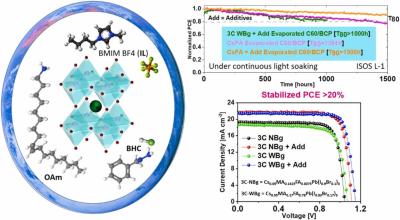QD Solar announces efficient perovskite solar cells developed for large scale manufacturing
QD Solar, a Canada-based venture developing tandem solar technologies, has announced 3rd party-validated efficiencies of their single junction perovskite cells. The 24% efficiency for spin-coated perovskites cells and the 23.2% efficiency for slot-die coated, manufacturing-ready, perovskite cells have been officially confirmed by MKS Instruments/Newport in Utah, USA.
“The silicon-dominated solar industry is suffering from eroding single digit profit margins for the past decade due to fierce worldwide competition. This industry has also suffered from stagnated solar efficiencies, due to fundamental limitations related to the inherit physics of silicon. This industry demands the next generation of bankable solar materials. Deploying low-cost perovskite-based solar will allow our customers, the solar panel manufacturers, to charge premium prices on high-efficiency panels and double their profit margins. That’s huge for the solar industry,” says Dan Shea, CEO of QD Solar.



